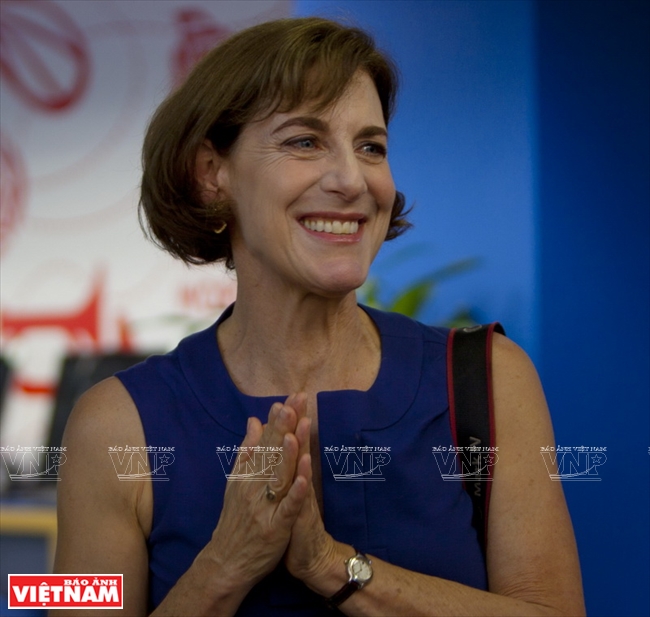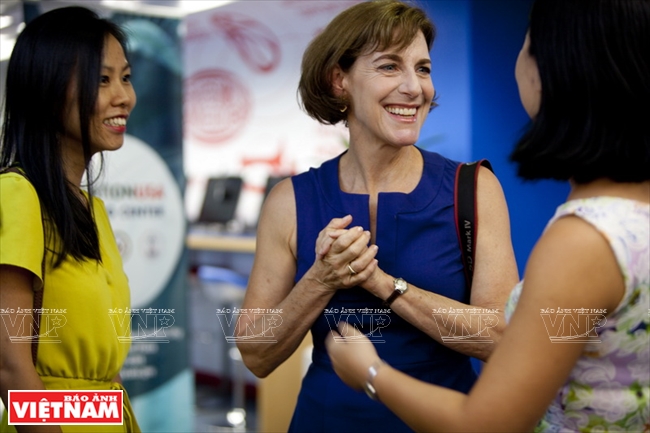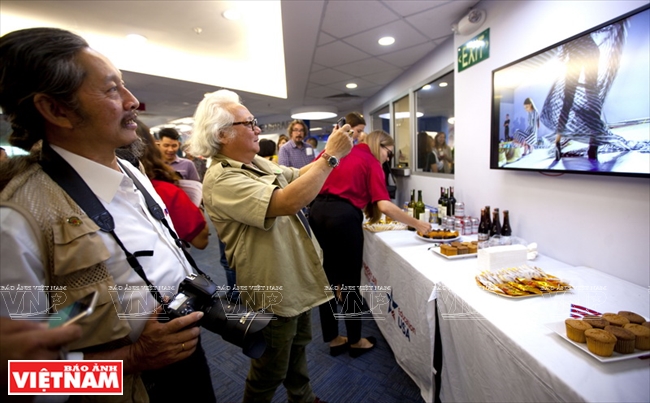The American Center in Vietnam recently held a photo exhibition and talk in which photojournalist Catherine Karnow shares her experiences about photographing Vietnam.
The exhibition attracted many photography lovers who had the chance to see Catherine’s photos of Vietnam from the early 1990s when the country opened to the world to the present day.
Catherine Karnow said she had many memories of Ho Chi Minh City, Hoi An, Hanoi, Quang Nam, Hue, Quang Binh, Ha Long Bay, Quang Ninh and Phu Quoc. She came to Vietnam in the first years of its renewal and was impressed by the country’s beauty. Catherine said Vietnam was really in her heart and she could see the changes in the country every time she visited.

American photojournalist Catherine Karnow.

She was born and raised in Hong Kong.

Catherine tells about the history of her work.

.Photography lovers come to see Catherine Karnow’s photos. |
Catherine Karnow was born and raised in Hong Kong. Her father is Stanley Karnow, an American journalist and a Pulitzer-winning author whose book "Vietnam: A History” changed the perspective of many generations of Americans about the Vietnam War.
Catherine Karnow followed in the footsteps of her father as she became a photojournalist. When she first came to Vietnam in 1990, she took the opportunity to see many beautiful places and observe Vietnamese people’s lives.
She met General Vo Nguyen Giap thanks to her father, who came to Vietnam to interview General Giap for The New York Times in 1990. Catherine received General Giap’s exclusive invitation to be the only non-Vietnamese photojournalist to document his historic first return to the forest encampment where he devised the legendary battle of Dien Bien Phu that ended French colonization. In 2013, Catherine was the only foreigner to photograph the funeral of General Giap.
Catherine said General Giap was a special man. She was touched when seeing thousands of people lining the road to pay their last tribute to the general, many of whom held in their hands the photo of General Giap taken by Catherine.
Catherine Karnow is planning to republish her photo book that has been released in Vietnam and the US, which will be a gift for Vietnamese and international readers./.